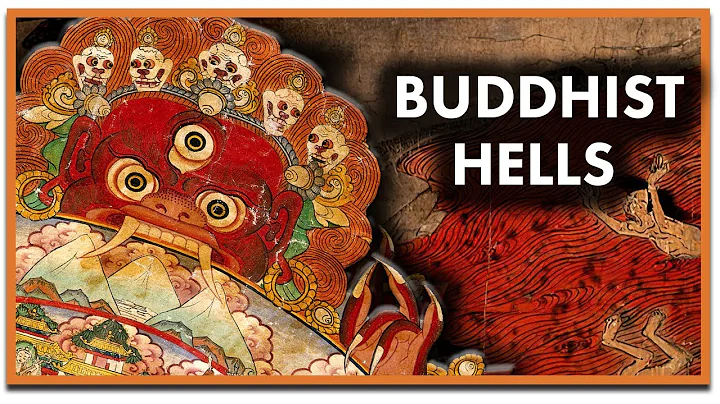Among some Buddhists, although they recite Amitabha Buddha every day, they cannot tell the difference between Amitabha Buddha and Tathagata Buddha . If you don’t understand it clearly, it’s a bit unreasonable.

In Buddhism, there are indeed many Buddhas and Bodhisattvas who do not distinguish carefully or have a certain understanding of Buddhist knowledge. It is more difficult to distinguish them. In temples, people often worship Buddhas include Amitabha Buddha, Avalokitesvara Bodhisattva , Maitreya Bodhisattva , etc.
Generally, Buddhists have very simple distinction between these Buddhas and Bodhisattvas. These Buddhas and Bodhisattvas have obvious characteristics. Amitabha Buddha is a male, Guanyin Bodhisattva is a female, and Maitreya Bodhisattva is the easiest to distinguish. He stands up with a big belly and laughs happily.
But for Buddhas and Bodhisattvas who look similar and look different, it is difficult to distinguish them, and sometimes it is easy to confuse them. So the question is, are "Amitabha" the same Buddha as "Tathagata Buddha"? If not, what is the relationship between them?

Today, let’s first answer the relationship between Amitabha Buddha and Tathagata Buddha.
1, Tathagata Buddha
Tathagata Buddha is very familiar to Buddhists and ordinary people. Whether from books or TV series, everyone knows that "Tatagata Buddha" is the largest Buddha in the world. It has vast supernatural powers and boundless magical powers. Many other Bodhisattvas and Arhats are his disciples.
Tathagata Buddha is the Buddhist ancestor " Sakyamuni . His original name is Gautama Siddhartha . He was a famous thinker in ancient India and the founder of Buddhism. He was honored by later generations as Buddha . The Chinese respectfully called him Buddha and was respected by the world as a god.

According to Buddhist scriptures, when Sakyamuni was 19 years old, he abandoned his royal life and became a monk to practice. At the age of 35, he achieved great enlightenment under the Bodhi tree, and then started Buddhism. At the age of 80, he showed Nirvana in the city of Kushinaga. Why is "Sakamuni" also respectfully called "Tathagata Buddha"?
In orthodox Buddhism, there is no The title of " Tathagata Buddha ". " Tathagata " is just one of the other names of the Buddha. According to Buddhist scriptures, the Buddha has ten names, namely: Tathagata, Offering, Right and Omniscient Knowledge, Pure One's Practice, Good Deed, Worldly Understanding, Supreme Man, Turkish Husband, Heavenly Man Master, and World-Honored One.
The word "Tathagata" is translated from the Sanskrit word (tathāgata). The word "Tathagata" is "true nature", which is the true status of all dharmas, and also contains the meaning of "trueness". The Buddhist scriptures explain "Tathagata" is: "Come on the way of true nature", and it also says "come truth". Tathagata is the absolute truth. " Diamond Sutra " records: "There is no origin and nowhere to go, so it is called Tathagata. "

To sum up, Tathagata Buddha is the ancestor of Buddhism. "Shakyamuni, Tathagata means that the Buddha is a saint who comes to the world with the absolute truth to preach to save all sentient beings. The Buddha Tathagata has great supernatural powers and boundless magical powers. He is a Buddha who is compassionate to help the world and cultivates true goodness.
2, Amitabha
Everyone knows that Amitabha is the catchphrase of Buddhist believers. It means praying or thanking the gods, etc.
What kind of Buddha is "Amitabha"? Amitabha Buddha is the Buddha of infinite light and the Buddha of infinite life. His light is infinite and his life span is also infinite.

Amitabha Buddha’s “A” means “no”. There are two pronunciations of “A”, and you can read “a” or “e”, so you don’t have to be attached to it. "Amitabha" means "quantity", and "Buddha" represents light, wisdom and life span. Therefore, Amitabha Buddha represents infinite light, wisdom and life span, so it is also called " Immortal Light Buddha " and "Amitabha Buddha".
Some Buddhists like to chant "Amitabha" and some like to chant " Namo Amitabha ", which means the same. "Namo" means refuge, destiny, dependence, and dependence. It means that we must rely on Amitabha Buddha's great wish to pass into Pure Land , and we can escape from life and death, escape from reincarnation, and obtain happiness from the sea of suffering.

Amitabha Buddha is not a Sanskrit word, but abbreviation of Amitabha Poya or Amitabha Yusi.
According to the "Amitabha Sutra", Amitabha Buddha has 48 great vows, which is to build a Pure Land world with his compassionate vows, namely the "Western Pure Land". Therefore, Amitabha Buddha is called the leader of the Western Pure Land and preaches to sentient beings in the Western Pure Land.
The " Three Treasures Buddha " is commonly said in Buddhism, namely Amitabha Buddha in the West, Sakyamuni Buddha in the center (Tathagata Buddha), and Medicine Buddha in the East. Also known as ", the Buddha of the Three Worlds, ".

3, the relationship between "Amitabha" and "Tathagata Buddha"
There is such a saying in the Buddhist world that Amitabha Buddha and Sakyamuni Buddha were in the relationship between king and minister at the beginning.
The origin of the two comes from legends. At that time, a minister of Baohai Fanzhi encouraged King Wuzheng Nian to develop the Bodhicitta to build the Pure Land. The minister who exhorted the king was the predecessor of Sakyamuni Buddha, and that king was the predecessor of Amitabha Buddha.

At that time, Shakyamuni Buddha knew that people in the future would have a hard life and would have to go through multiple hardships. In order to save people in the future, Shakyamuni was born into the world of Sava to save sentient beings and keep people away from the sea of suffering.
The world of Shaba was born in Sakyamuni, which is the world where people live. Amitabha Buddha chose to save the Western Pure Land and become a Buddha.
Amitabha Buddha was earlier than Sakyamuni Buddha who saved him into a Buddha. Amitabha Buddha made forty-eight great vows, while Sakyamuni Buddha made five hundred great vows, so he was called a great compassionate Bodhisattva.

3, Amitabha Buddha" and "Tathagata Buddha"
has a different status. Shakyamuni Buddha is the founder of Buddhism. Shakyamuni is not his real name, but his honorific title for him in later generations.
And Amitabha Buddha is the infinite pure Buddha, the infinite light Buddha, the infinite life Buddha, etc.; he is the Buddha in the Western Paradise.

is different in the time to become a Buddha. Sakyamuni only lasted for more than 2,500 years; but Amitabha Buddha became a Buddha before 10 kalpas. If the ten kalpas in the "Amitabha Sutra" is calculated based on the years of the earth, it is 13.4384 billion years.
has different purposes for the world. Sakyamuni Buddha is to guide sentient beings to Amitabha Buddha's Western Paradise. Amitabha Buddha's purpose of staying in the world is to teach sentient beings in the Pure Land so that they can also become Buddhas.
4. How Distinguish between "Amitabha" and "Tathagata Buddha"?
Many people cannot distinguish "Amitabha" and "Tathagata Buddha". In fact, it is easy to distinguish as long as you pay attention to it.
"Sakya Muni Buddha", he is often accompanied by two Bodhisattvas: Manjushri Bodhisattva and Samantabhadra Bodhisattva .

Bodhisattva with "Amitabha" is: Guanyin Bodhisattva and Mahasthamaprapta Bodhisattva . As long as you see Guanyin Bodhisattva, you can know which one is Amitabha.
In addition, the holy image of Amitabha Buddha usually holds a lotus in the left hand and a vow seal with the right hand. If you see a Buddha holding a lotus in the hand to guide sentient beings, then this Buddha is definitely not Sakyamuni Buddha, but must be Amitabha Buddha. If you put your hands between your legs and your hands are facing upward, this is the meditation seal, which is usually Sakyamuni Buddha, and there are ten thousand characters on your chest.







![[English] Who Am I - Lecture 1 - Ven. Guan Cheng - DayDayNews](https://i.ytimg.com/vi/KU0fUs2It5o/hq720.jpg?sqp=-oaymwEcCNAFEJQDSFXyq4qpAw4IARUAAIhCGAFwAcABBg==&rs=AOn4CLDFpQUN_QwRfC7bmP4sUadq-RcYdg)
![A Moving Masterpiece 清明上河图 [English narration] - DayDayNews](https://i.ytimg.com/vi/kxff-4GktOI/hqdefault.jpg?sqp=-oaymwEcCOADEI4CSFXyq4qpAw4IARUAAIhCGAFwAcABBg==&rs=AOn4CLBtHGLeUpJNCYDJYnZTuISQ1N5Vag)


